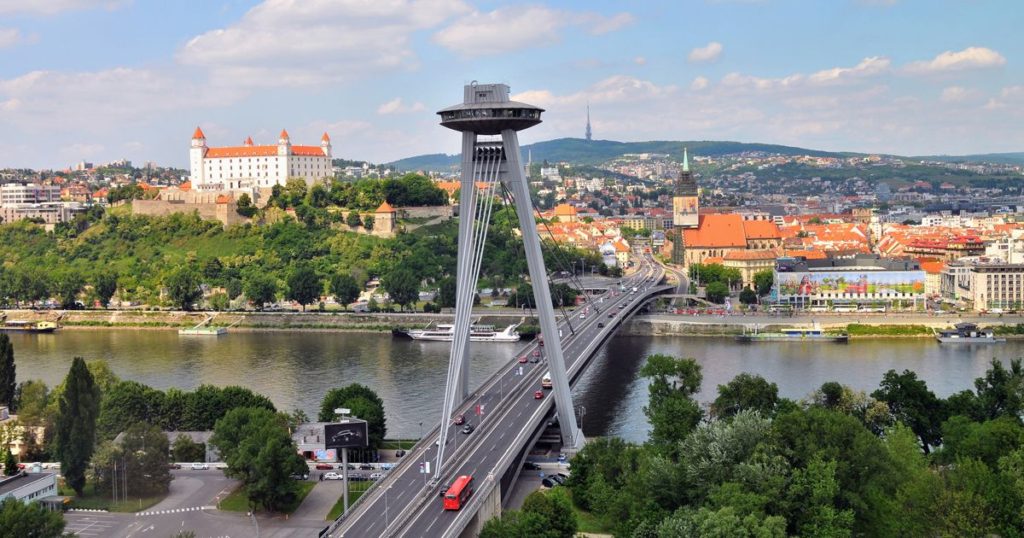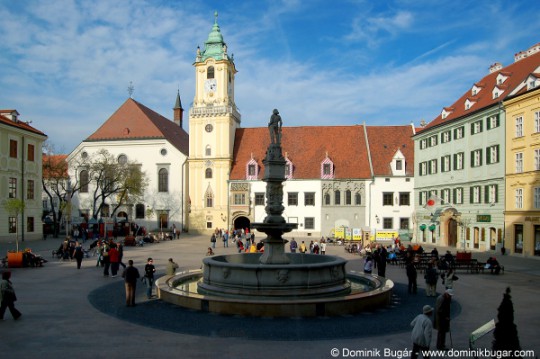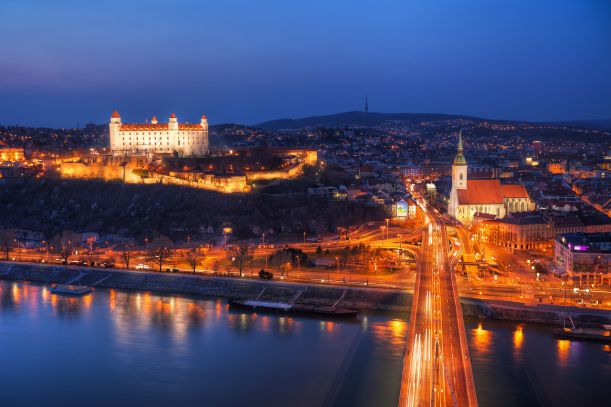Few Indonesians know about Bratislava. Yet, my days there were actually very enjoyable and memorable.
I went to Bratislava, the state capital of Slovakia, as part of an art group. It was August and a time for the annual Summer Festival in Bratislava. First, let’s get one thing straight: I am not a musician, nor am I a dancer. I was there in a supporting role, helping in the administrative side of things, but mostly in documentation and publication.
The group is called Manikam Khatulistiwa. Founded in Bandung in 2009, among its members are talented artists from Bandung and neighboring areas. The group is dedicated to preserve and develop various art forms and traditions of Indonesia and to educate the younger generations. The group has performed in many places and events in Indonesia and abroad, presenting traditional and modern music, dances, plays, and poetries.
The Cultural Summer and Castle Festival Bratislava—or Bratislava Summer Festival for short—is an annual event. It is an open-air city festival, offering music, dance, and other activities in the streets of Bratislava. By 2016, this three-month long festival has reached its 41st anniversary. With the help of the Indonesian Embassy in Slovakia, we managed to secure a timeslot in the festival.
The group spent months in preparation, not just rehearsing for the performance but also arranging the visa, the airline ticket, the hotel, the group bus, and most importantly, the sponsorships. Individually, I did some preparations too.
I am old enough to know ”Czechoslovakia,” a prominent country in the Soviet’s Eastern Bloc—the name kind of stuck to my mind. I’m pretty sure many Indonesians have the same experience. When Indonesians use the names “Ceko” and “Praha”, they are referring to the whole area that was once called Czechoslovakia. I know that the country has split into Slovakia and the Czech Republic, but I have to admit I didn’t know enough about the individual countries. I couldn’t even locate them in a map of Europe!
So, I did some preparation before leaving. I read Wikipedia articles. I googled. I bought Lonely Planet’s Phrasebooks to familiarize with the languages of the region. I joined Couchsurfing and booking.com. I searched out for people who know the country. Luckily, one of my oldest friends—her name is Dvi—used to live in Hungary, which is just next door from Slovakia. She now lives in Ireland but still keep many useful contacts.
Dvi introduced me to Citra. After a short text chat, I discovered that we actually studied at the same university, although I am about a decade her senior. Her husband, Vlado, is a Slovakian. They gave me plenty of useful tips and advices. And introduced me to many beautiful photos!! Vlado also mentioned Knoppers, a snack that I could find in Slovakian supermarkets. He must’ve had a fond memory of it; of all the products sold in Europe, he specifically mentioned this one. I made a note in my mind to find and try it.
Here are some of the photos he sent me, taken from various links in the Internet. After seeing this, how can you not be excited to visit Bratislava? How can you not love the city?

(Source: http://i1.mirror.co.uk/incoming/article5819167.ece/ALTERNATES/s1200/Bratislava.jpg)

(Source: http://www.miceslovakia.com/sites/default/files/imagecache/node-gallery-page/images/galleries/474/bratislava-hlavne_nam-07410403.jpg)

(Source: http://g.cz/sites/default/files/g/2014/08/bratislava-x2.jpg)

(Source: https://upload.wikimedia.org/wikipedia/commons/8/85/Slovakia_Bratislava_77.jpg)
During my research, I got very interested with the Tatras, the majestic mountains in Slovakia, and the many UNESCO World Heritage sites. I feel like I have to go there. I have always been interested in natural beauty and the history of an area. One big problem: their locations are far apart. Slovakia is not a particularly big country and it has a good infrastructure, but traveling still takes time and money. Vlado’s inputs helped me to focus and prioritize.
Getting the visa was more complicated than I previously thought. I had expected that there would be many requirements from the Slovakian Embassy, but I thought that an invitation letter supported by a good bank record and travel history would be more than enough. I have been traveling a lot in the past decades or so, including to Japan, Singapore, China, Brazil, Thailand, Hong Kong, Macao, and Australia—that last one for a Master degree—but the last time I went to Europe was in the mid-1990s, which is more than a decade ago.
The Embassy required an itinerary, supported by prove of hotel bookings. The Embassy would look at how long we would stay in Slovakia in comparison to other Schengen countries. (For those unaware, most European Union countries have formed a single travel area with common visa policy, effectively abolishing borders and passport requirements between them. This are is called Schengen Area.) Any embassies of the countries bounded by the Schengen Agreement could issue visas, but only for those whose travel plan involved their respective country. Otherwise, the visa application would be directed to the countries better related to the travel plan. Because in addition to Slovakia, I planned to visit its neighbors, I have to ensure my days in Slovakia out-numbered those in the other countries. (Yeah, I was planning to extend my stay beyond the festival dates. Hey, after spending thousands of dollars for an airline ticket, why don’t I enjoy it a little more?) It was not a difficult process, but it still required time and effort, and it was somewhat restrictive. If you already booked a room, then you could not easily modify your travel on the go.
I have made contact to various friends in Europe, including the aforementioned Dvi, to arrange meet-ups with them and there was another member of the art group that would like to travel along with me, so I have to take their schedules and opinions in to consideration. All of these were time-consuming, but the itinerary was completed and the visa was issued.
Preparing for the equipment, clothing, and other things to carry were not as complicated. A good jacket and a pair of shoes, pieces of clothes, cameras and gadgets, travel bags, personal medicine—I was good to go.
